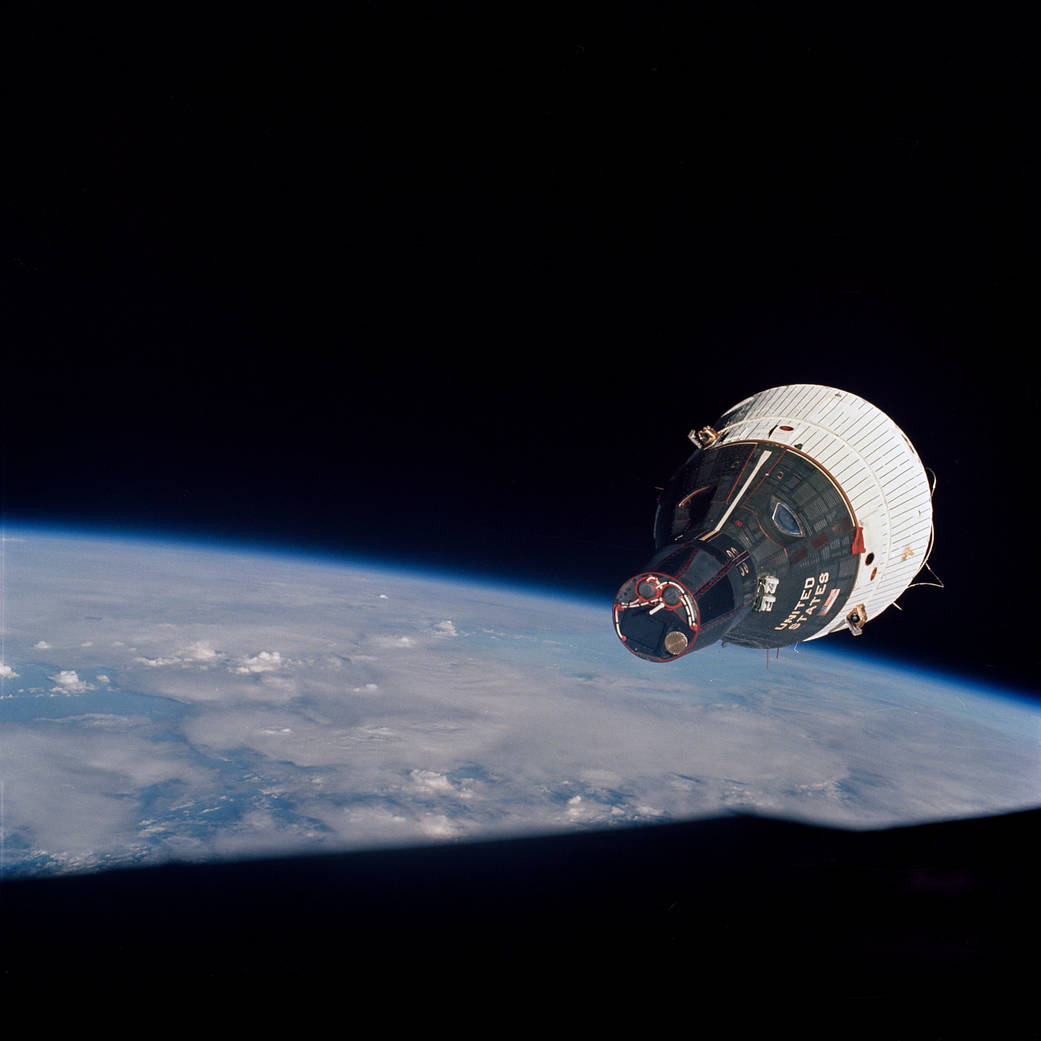双子星座7号和双子星座6A号终于相遇
In this photo from Dec. 15, 1965, the Gemini-VII spacecraft is seen from the Gemini-VI-A spacecraft during their rendezvous mission in space. The two spacecraft are approximately 43 feet apart.
Astronauts Jim Lovell and Frank Borman launched on Gemini-VII on Dec. 4, 1965, and eventually spent two weeks in orbit, the longest-duration flight at that time.
Just as Orion and the International Space Station are helping NASA learn how to go to Mars, the Gemini program defined and tested the skills NASA would need to go to the Moon in the 1960s and 1970s. Gemini had four main goals: to test an astronaut’s ability to fly long-duration missions (up to two weeks in space); to understand how spacecraft could rendezvous and dock in orbit around the Earth and the Moon; to perfect re-entry and landing methods; and to further understand the effects of longer space flights on astronauts.
Image Credit: NASA
在这张拍摄于1965年12月15日的照片中,双子星座7号飞船是从双子座6A号宇宙飞船上拍摄,当时双子座6A号宇宙飞船正在太空中执行交会任务。两艘飞船相距约43英尺。
宇航员吉姆·洛弗尔和弗兰克·博尔曼于1965年12月4日乘坐双子星座7号发射升空,最终在轨道上停留了两周,这是当时飞行时间最长的一次。
就像猎户座和国际空间站帮助NASA学习如何前往火星一样,双子星座计划在20世纪60年代和70年代定义和测试了NASA登月所需的技能。双子星座有四个主要目标:测试宇航员执行长时间飞行任务(在太空中飞行两周)的能力;了解宇宙飞船如何在环绕地球和月球的轨道上交会和对接;完善重返和着陆方法;并进一步了解长时间太空飞行对宇航员的影响。
影像来源:NASA

